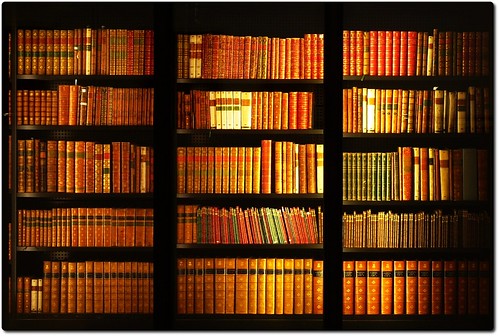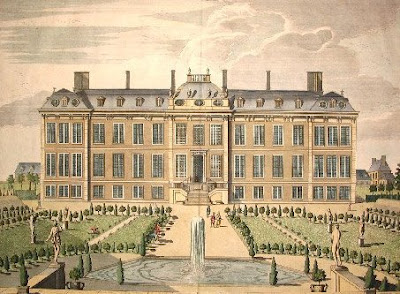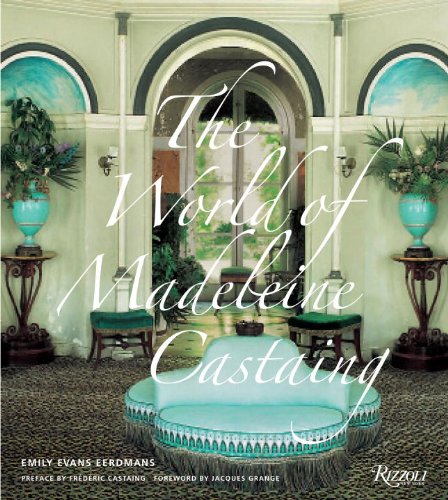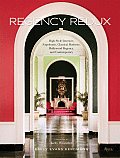
The original Loop Chair at Ditchley Park
I have been greatly anticipating the January issue of
the Magazine Antiques. Its new editor Betsy Pochoda (formerly of
House and Garden) has gradually been making changes since May 2008, but finally in this month's issue we get to see its much-talked about redesign.
Another seismic shift in the magazine has been Pochoda's inclusion of mid-century design, which, frankly, is about time. When Leigh Keno, American furniture dealer and Antiques Roadshow poster boy, starts slipping in 1950s Italian furniture alongside an 18th Philadelphia School tallboy, you know things are a-changing.
One article in particular will make you want to consider giving the magazine a closer look: "The It Chair" by Shax Reigler. It chronicles the history of what many have dubbed the Frances Elkins Loop Chair through the eyes of design sleuth James Shearron of the architectural firm
Bories and Shearron. Bories explains his fascination with the chair: "They appear to be made from one continuous unbroken line and that's very alluring. It also walks that line between modern and traditional design which is something we play with in our own work."

first picture of the Loop Chair in the
Dictionary of English Furniture, 1904-1908
The first documented photograph of the chair Shearron unearthed was in the bible of English furniture: Percy MacQuoid and Ralph Edwards's 4 vol. Dictionary of English Furniture first published between 1904-1908 . MacQuoid always mentioned the owners of the furniture he illustrated, and these chairs, dated circa 1770 and made of black japanned (a process of painting meant to simulate lacquer) beechwood, belonged to a Frank Green, Esq. When Shearron contacted the Victoria and Albert Museum looking for more examples, they sent him this photograph of a chair bequeathed to them by the same Frank Green!
 18th century English side chair in the collection of the Victoria and Albert Museum, London; the articulation of loops on the back of this chair in which you can see their overlapping as well as how they shape the back is based on the designs of William de la Cour and is the closest precedent for loop-back chairs. However there is no direct design source for the Elkins chair found to date
18th century English side chair in the collection of the Victoria and Albert Museum, London; the articulation of loops on the back of this chair in which you can see their overlapping as well as how they shape the back is based on the designs of William de la Cour and is the closest precedent for loop-back chairs. However there is no direct design source for the Elkins chair found to datePick up the magazine to read more about the chairs' odyssey - which even spent time at Ronald and Nancy Tree's (later Lancaster) Ditchley Park as seen in the 1950 watercolor by Alexandre Sérébriakoff of the writing room (top photo). (Apparently Ronald kept the chairs after their divorce until the sale of his collection by Sotheby's Parke Bernet in 1976.)

But back to Frances Elkins. It is more than likely that either Elkins or her architect brother David Adler owned a copy of the Dictionary of English Furniture from which she had the chairs copied. Given that Elkins often interpreted historical styles in a modern way, it is no surprise she fell spellbound for these chairs and copied for two commissions: the screened-in porch of Evelyn Marshall Field and the living room of Mr. and Mrs. Leslie Wheeler.
 Mr. and Mrs. Wheeler's living room in Lake Forest, Illinois in a photograph by Ezra Stoller, circa 1934
Mr. and Mrs. Wheeler's living room in Lake Forest, Illinois in a photograph by Ezra Stoller, circa 1934It is fitting that Elkins installed them in an outdoor-type space. As Sotheby's expert Peter Lang notes in the article, "They seem to be designed in same spirit as whimsical summer house furniture of the period - fancifully painted pieces in exotic styles of pieces carved to look as though they are made of tree branches."
 A pair of George III painted armchairs, circa 1800, from the archives of Hyde Park Antiques, were light enough that they could be carried inside and out
A pair of George III painted armchairs, circa 1800, from the archives of Hyde Park Antiques, were light enough that they could be carried inside and out
Shearron came across this mid-century cast-iron pair (which most certainly were painted white) intended for the outdoors, and furthermore remembers seeing the loop chair in terrace settings in Hollywood films of the 30's.

Whether indoors or out, they are still tremendously appealing and in demand. Bories and Shearron are investigating having faithful reproductions made, unlike the later examples which tend to be more clunky.

A loop chair in the country house living room of Albert Hadley
Another feature Bories and Shearron will be certain to include is the dipped seat, which Elkins also replicated in her versions (which is a good tip to look for if something is represented with an Elkins provenance). "The opportunityto see this delicate calligraphic-like object married with our architecture would be very cool. We love them in black like the originals, or even a dark mahogany. A full set around a dining table or a few in a hallway - they really can go anywhere." And that's a recipe for a classic, if I ever heard one.
UPDATE: This April, Sotheby's New York will be offering the Elkins Loop Chairs designed for the Leslie Wheelers. This is a rare opportunity to own documented Elkins chairs - how much will they go for?
UPDATE II: http://www.themagazineantiques.com




 The original Loop Chair at Ditchley Park
The original Loop Chair at Ditchley Park


























































